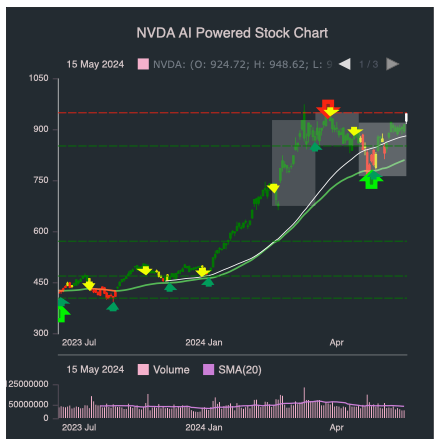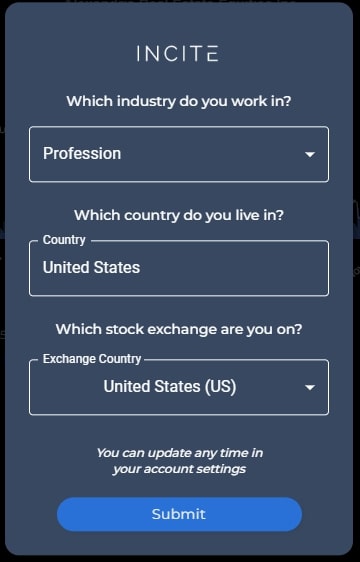Analyzing the costs and prices of AI analysis and stock prediction platforms is essential to ensure that you get the most from your investment while avoiding hidden fees or unexpected expenses. Prices vary widely which is why it's essential to understand the value you get value for your money. Here are the top 10 suggestions for evaluating the price and costs of these platforms:
1. Learn Pricing Model
Subscription: Make sure to verify if a platform has an amount per year or month and what is included with each tier.
Pay-per-use: Verify whether the service charges based on usage (e.g., number of data requests, trades or even predictions).
Freemium model - Find out whether there's a free version with limited features, and a premium version that includes premium features.
2. Compare Pricing Tiers
Compare which features are included in each pricing stage.
Scalability: Ensure that the pricing tiers align with your needs, whether you're an individual trader, professional, or an institutional member.
Upgrade flexibility: Find out whether you can effortlessly upgrade or downgrade your system as your needs change.
3. Evaluate Hidden Costs
Data charges: Find out if need to pay additional for access to premium data.
Brokerage charges: Find out whether the platform charges additional charges for trading or integrate with brokers.
API usage: Determine if will incur additional costs for high-frequency API usage or API access.
4. Test out free demos as well as trials
Trial period: Check out platforms that offer a free trial or demo to test out their features.
Trial limitations: Decide if you can use all features in the trial, or only a limited number.
If the platform is not the right fit for you, then make sure that you can remove the trial.
5. Look for promotions and discounts.
Discounts on annual subscriptions The monthly plan is compared with an annual subscription.
Referral Programs: Find out if your platform offers discounts or credit to users who refer others to it.
Inquire about institutional or bulk pricing if your company is large.
6. How to Evaluate Return on investment (ROI).
Cost vs. value: Consider whether the capabilities and features of the platform justifies the cost. Can it, for instance will help you make a better decisions in trading or help you help you save time.
Performance track record: Research the platform's success rate or user reviews to assess its potential return on investment.
Costs of alternative platforms: Compare the costs of the platform with the possible cost of not using it (e.g. not utilizing opportunities, manual analyses time).
Examine the Cancellation Policy as well as the Refund Policy
Cancellation Terms: You can cancel your contract without any hidden fees or penalties.
Find out if there's an option to refund subscriptions you haven't utilized.
Auto-renewal : Find out if your subscription is automatically renewed by the platform. If so, find out how you can opt out.
8. Price transparency is essential.
Price page that is clearly written: Make sure the platform is equipped with a clear and precise pricing page without hidden costs.
Customer Support: Contact Customer Service for clarification of any unclear pricing information or added cost.
Contract Terms: Go through the contract terms to determine the existence of penalties or long-term obligations.
9. Compare with Competitors
Feature comparison Comparing the prices and features of the platform to the competition to ensure that you're getting the most value for money.
User reviews: Read user feedback to see whether other users think that the platform is worth the investment.
Market positioning: Determine if it is priced as a premium, mid-tier, or a budget choice and if it is in line with your expectations.
10. Examine the Long-Term Costs
Price increases: Look at the platform's past history and note how often it has raised prices.
Check whether you have new features that are available in the current version or if you need to upgrade.
Scalability cost The platform needs to be priced reasonably as your trading activities or data requirements grow.
Bonus Tips
Trial multiple platforms: Test different platforms in free trials to compare their capabilities and effectiveness.
Negotiate the price: If you are frequent users or part of a large organization You can inquire for discounts or special pricing.
There are free educational tools on various platforms.
These guidelines will allow you to determine the cost and price of AI trading platforms that predict/analyze price fluctuations in stocks. So, you'll be able to pick the best platform that matches your budget with the features and performance needed. A platform that is priced right will strike the right balance between affordability, functionality and performance in order to optimize your trading. See the most popular look what I found on ai for trading for site info including ai for stock trading, market ai, ai trading, ai for trading, investing ai, market ai, best ai trading app, best ai for trading, ai for investing, chart ai trading assistant and more.

Top 10 Tips To Assess The Scalability Ai Stock Analysing Trading Platforms
To ensure AI-driven stock prediction and trading platforms can scale and scalable, they need to be able to deal with the growing amount of data and the complexity in markets, and also user demands. Here are 10 suggestions for evaluating the scalability.
1. Evaluate Data Handling Capacity
Tips : Find out if the platform has the ability to process and analyze large data sets.
Why? Scalable platforms should be able to handle increasing amounts of data with no reduction.
2. Test Real Time Processing Capabilities
Try the platform out to see how it handles streams of data in real-time for example, breaking news or stock price updates.
The reason: The importance of real-time analysis is to make trading decisions. delays can lead to missed opportunities.
3. Cloud Infrastructure Elasticity and Check
Tip. Check if the platform is using cloud-based infrastructure, such as AWS, Google Cloud and Azure that can scale resources on demand.
Why: Cloud-based platforms provide the flexibility. They permit the system to scale up or down depending on demand.
4. Assess Algorithm Efficiency
Tip 1: Evaluate the computational efficiency for the AI models that are being utilized (e.g. reinforcement learning deep learning, etc.).
Reason: Complex algorithmic structures are resource-intensive. Making them more efficient is the key to scaling.
5. Learn about Parallel Processing and Distributed Computer Systems
Tip: Determine if a platform makes use of distributed computing and parallel processing frameworks.
What are they: These technologies facilitate quicker data processing and analysis over many nodes.
Review API Integration, and Interoperability
TIP : Make sure the platform is compatible with other APIs like market data providers and brokerage APIs.
Why: Seamless integration ensures that the platform is adaptable to new data sources and trading environments.
7. Analyze User Load Handling
You can simulate high user traffic and observe how the platform responds.
The reason: Scalable platforms must offer the same level of performance regardless of the number of users.
8. Examine the Model Retraining Adaptability
Tip: Evaluate how frequently and efficiently AI models are trained with the help of new data.
What's the reason? As markets shift, models must be updated rapidly to remain accurate.
9. Examine for fault tolerance and Redundancy
Tip. Make sure that your platform has failover mechanisms and redundancy in case of hardware or software malfunctions.
Why: Downtime can be expensive for traders, and the ability to tolerate faults is crucial to allow for scalability.
10. Monitor Cost Efficiency
Tips: Calculate the cost of scaling your platform. Incorporate cloud resources, storage for data and computational power.
Why? Scalability should come at a cost that is viable. This means that you must balance the performance against the cost.
Bonus tip: Future-proofing
Make sure the platform is able to incorporate the latest technology (e.g. quantum computing, advanced NLP), and is able to adjust to regulatory changes.
By focusing on these aspects it is possible to evaluate the scale of AI stock prediction and trading platforms. This will ensure they are robust, efficient, and ready for future expansion. See the top trading ai tool url for more tips including AI stock trader, ai tools for trading, AI stock price prediction, can ai predict stock market, how to use ai for stock trading, how to use ai for copyright trading, ai options, ai investment tools, how to use ai for stock trading, best AI stock prediction and more.
